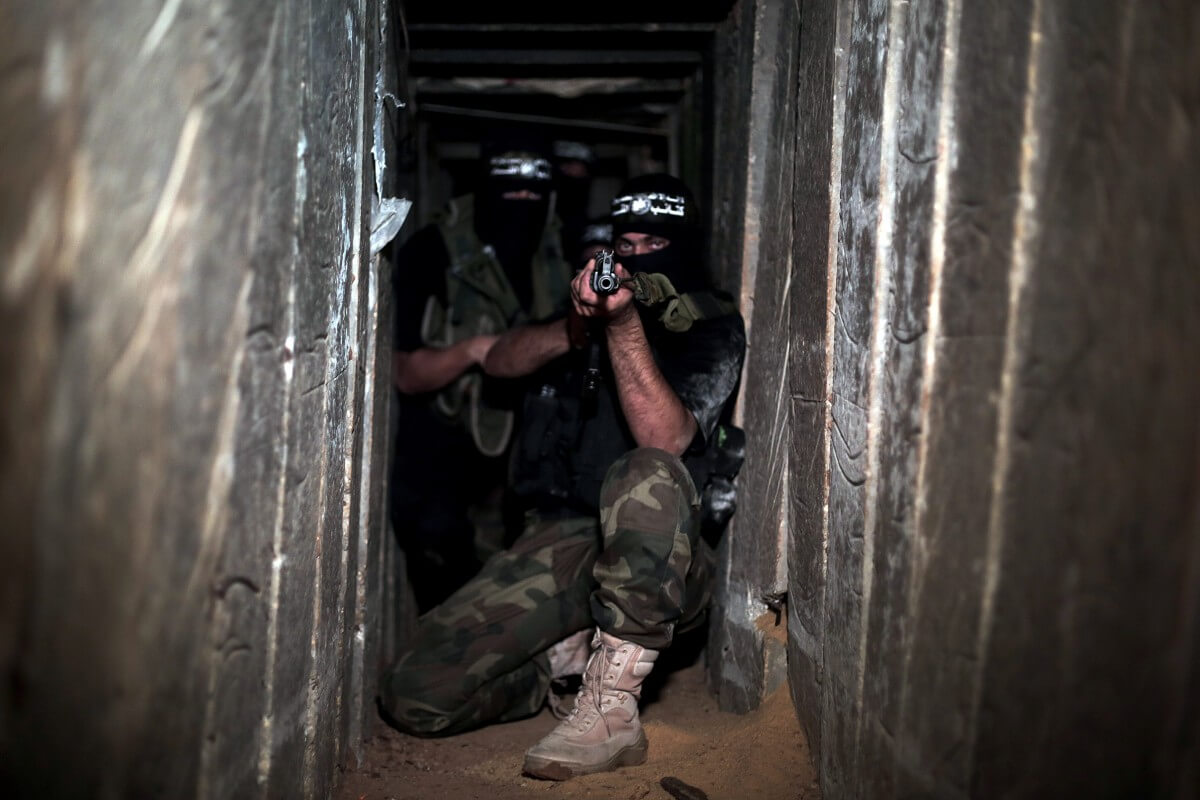The death of seven Hamas fighters in late January when a tunnel collapsed on them brought attention once again on military tunnels in Gaza. The seven were killed while renovating one of the infiltration tunnels east of Gaza City during an winter storm where torrential rain pounded Gaza. Their funeral was attended by hundreds of thousands of mourners who expressed grief over the loss. At the memorial, Ismail Haniyia, a senior Hamas political leader said that the recent quiet in Gaza was only because the group is developing its military capabilities for future conflict.
Yehia Mousa, a Hamas official said that his group reveals no secrets when acknowledging that its tunnels have tripled in number since the end of the 2014 conflict. “It is a must that we should take the time to develop our military tunnels. They are a strategic asset that we can never give up,” Mousa told Mondoweiss.
Mousa described how strenuous the task is for Hamas operatives, “Our fighters work under precarious conditions for long hours every day to dig these tunnels and equip them with all the necessary things of electricity, ventilation, and wires… so that they can be used to carry out attacks targeting Israeli military positions.”
Gaza based political analyst, Mamoun Abu-Amer explains why the tunnels are with great importance for the Palestinian resistance in Gaza. “The infiltration tunnels give the Palestinian resistance a golden opportunity to confront the Israeli military’s qualitative superiority in creative ways,” Abu-Amer told Mondoweiss. He added that the attacks implemented by the tunnels can escape Israeli tanks and planes, “When fighters work underground, planes and tanks are unable to stop them.”
Countering Israeli military power

Al Qassam fighters in tunnels in Gaza. (Photo: Hamas press office)
Destroying the sophisticated network of the infiltration tunnels was Israel’s stated objective during its assault on Gaza during 2014. Israel alleged that Hamas operatives had constructed these tunnels for military purposes, and in fact the Israeli offensive gave Hamas a chance to implement this military tactic during the summer war.
The tunnels were successfully used to carry out attacks against Israeli forces during the ground invasion on Gaza and presented Hamas’s only opportunity to strike a significant blow against the Israeli forces as they allow Hamas fighters to quickly engage in a direct combat with Israeli soldiers.
Al-Qassam brigade, the military wing of Hamas, surprised Israeli forces on the 19th of July in 2014 when nine Hamas fighters stormed a military Israeli position located to the east of central Gaza Strip. The fighters infiltrated from a tunnel that emerged in the Israeli position. They attacked Israeli jeeps and had successfully ambushed them. Israelis acknowledged that two officers were killed in the attack. Al-Qassam displayed videos of the attack during the first anniversary of the Israeli assault which show Hamas fighters carrying out their attack and retreating from the scene without any Israeli reaction.
Abu Yousef, a Hamas fighter who conducted an operation against Israeli forces east of Gaza city on July 23rd, 2014, said he and his comrades appeared from a tunnel that ends outside Gaza’s land to directly confront the Israeli forces.
“Our operation was complex. We divided ourselves into two groups, the first one went to Israeli military outpost where they implanted explosives. The second group, I was among them, waited for Israeli military personnel carried by their armored jeeps.” Abu Yousef said.
He described how fierce the clash was between them and the Israeli soldiers. “We opened our heavy fire against them. They were startled”.
Abu Yousef gained an advanced Israeli rifle from a soldier who he thought was killed by his weapon. “I took it and turned back to the tunnel.”
One of the the tunnels greatest assets is the protection they afford Palestinian fighters, and leaders. Hamas said that it used tunnels to erect rocket launchers to prevent detection from Israeli unmanned planes. Some of the tunnels are used to store Hamas weaponry and the rocket arsenal, making them accessible when needed. The tunnels have also been used to protect Hamas top military and political leaders and allow them to travel more safely in Gaza.
Last Hope

Al Qassam fighters in tunnels in Gaza. (Photo: Hamas press office)
Finally, Hamas military attacks conducted via the tunnels facilitate the capture of Israeli soldiers, the only effective mechanisim Hamas has found to negotiate with Israel over Palestinian prisoners. In 2006, three Hamas fighters abducted Gilad Shalit and killed two of his comrades. Shalit was kept in Hamas’s hand for five years when it reached a deal with Israel to free 1000 Palestinian prisoners in exchanging them with Shalit.
Tens of thousands of Palestinians are held prisoners inside Israeli jails, many of them are stuck there without charges or even fair trials. Israeli Authorities freeze Palestinian youth ages by its long policy of administrative detention. Hamas rhetoric always refers to the tunnels as the best bet to free the Palestinian prisoners from the Israeli jails.
“The world has not left any other choice for us to handle one of the most important Palestinian cases which is the prisoners. We can never abandon our heroic prisoners who sacrifice their whole ages to free our land” Mousa concluded.
Source Article from http://mondoweiss.net/2016/02/tunnels-remain-hamas-most-strategic-asset-in-the-gaza-strip/
Related posts:
Views: 0
 RSS Feed
RSS Feed

















 February 17th, 2016
February 17th, 2016  Awake Goy
Awake Goy  Posted in
Posted in  Tags:
Tags: 
















